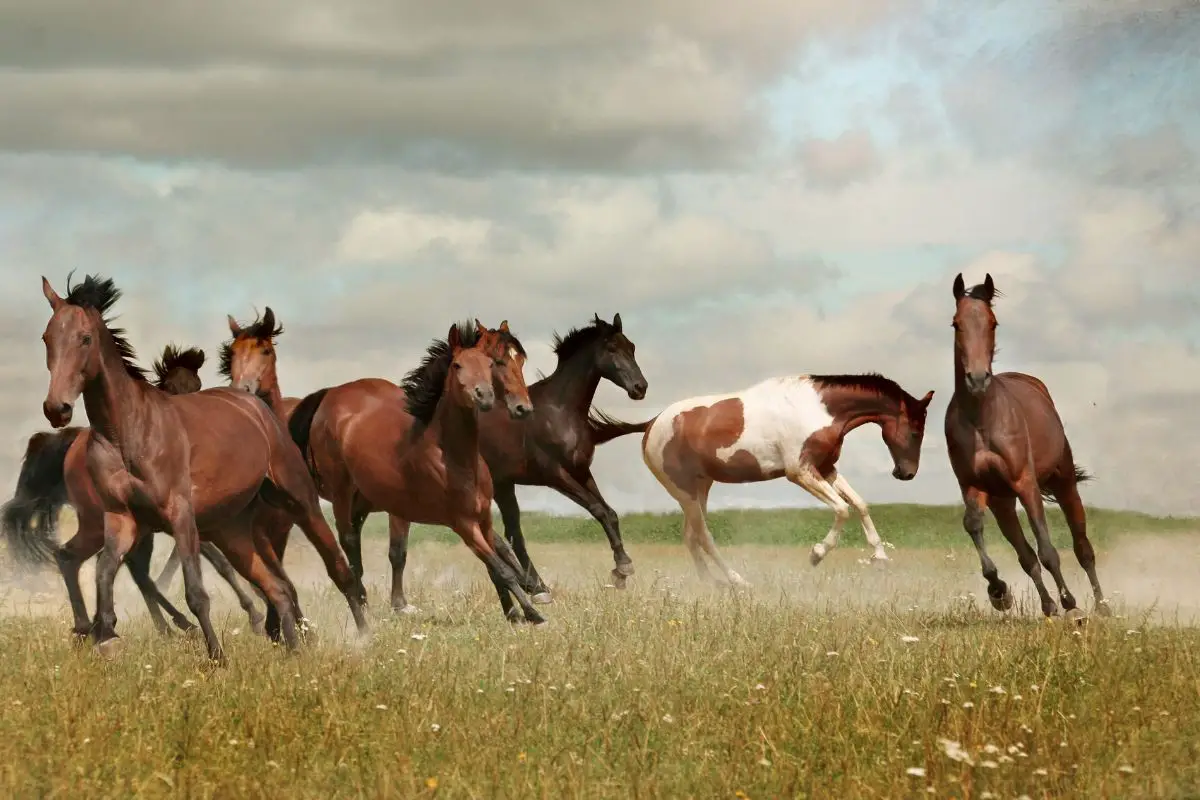
A horse is a horse — of course! But there are many other animals that are similar to this beloved domesticated mammal. These large creatures have strong hooves that help them travel long distances.
Horses can sleep standing up, and they’re found in regions throughout the world. All horses are herbivores, which means that they only eat plants like grass, hay, straw, and certain fruits and vegetables. The horse has long been a symbol of the American West, but these strong mammals are also beloved in many other countries.
An adult horse can weigh up to 660 pounds and has an average lifespan of 25-30 years in captivity. They can be between 5-7 feet tall with a length of approximately 8 feet. Horses can reach maximum speeds of 55 miles per hour at full gallop.
There are also feral and wild horses that can be found in various regions, too. So, what other animals are like horses? Read on to check out some comparable species.
1. Zebras: Black and White Striped Beauties
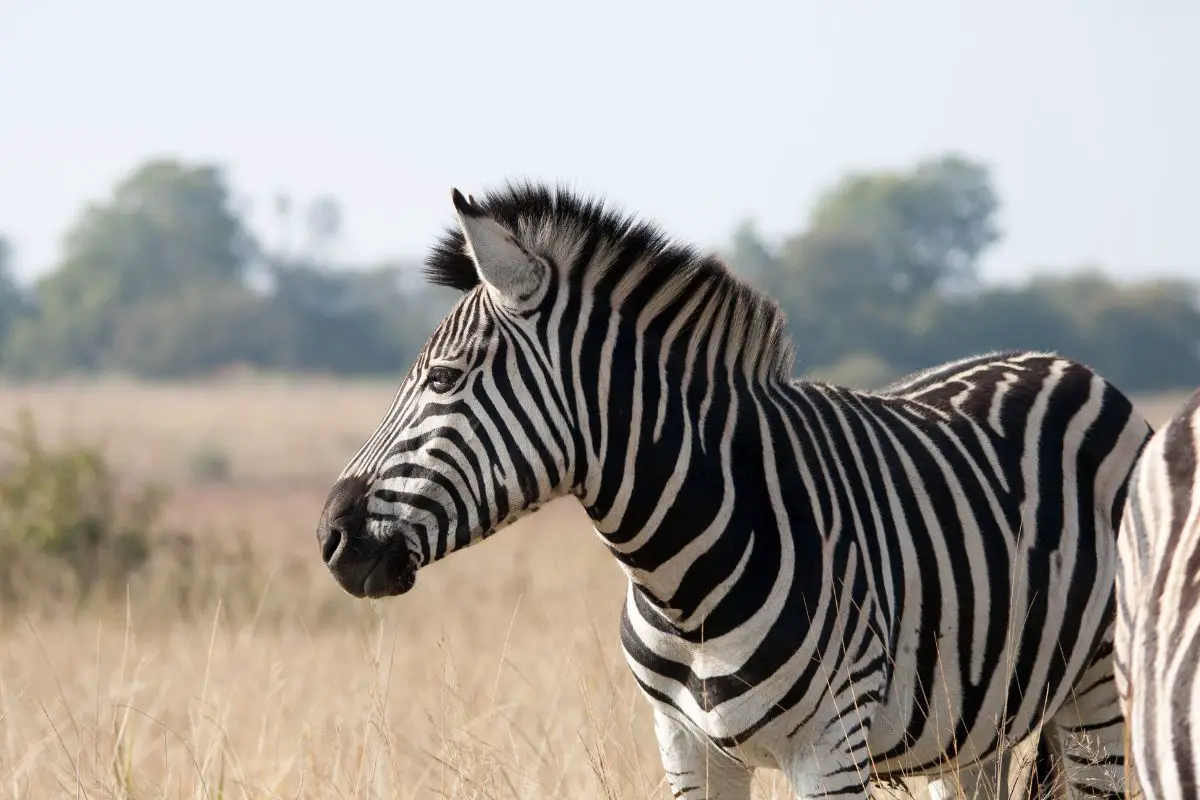
Zebras hail from the same family as horses and originate in Africa, living amongst the grasslands and plains. These beautiful animals have a unique black and white striped coats that help to protect them from predators. Zebras can be up to 5.5 feet tall and weigh between 480-900 pounds.
Zebras are herbivores and prefer grasses but will also eat leaves and even entire young trees. They’re not as fast as horses, and they’re certainly more aggressive in terms of behavior. The average zebra lives to be approximately 25 years old in the wild.
Horses don’t have the iconic black and white stripes that zebras do. They also hail from many different regions, while zebras are strictly African creatures. Most humans domesticate horses due to their calm and docile nature, while zebras’ unpredictable and more aggressive behavior makes them much more difficult to tame.
2. The Onager: One Wild Ass
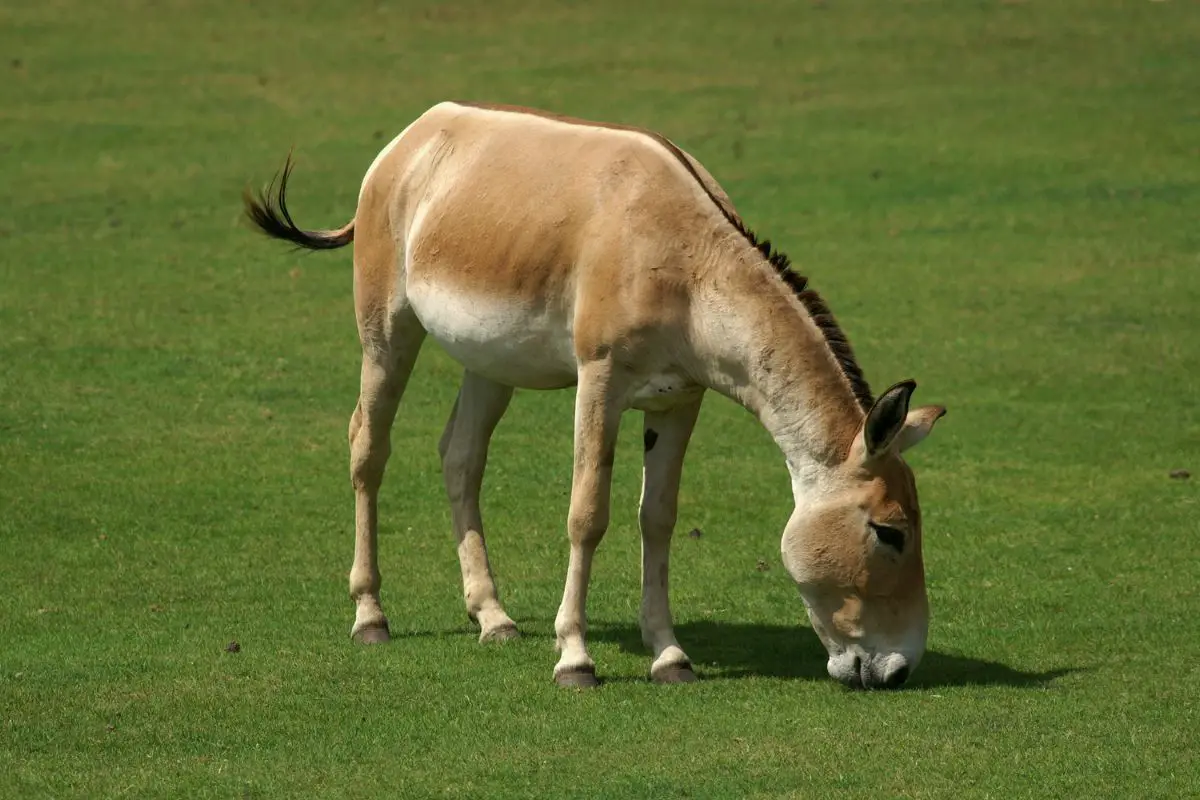
The onager is known as the Asiatic wild ass and is native to Asia. These horse-like mammals are about 6.9 feet tall and can run up to 40 miles per hour. The onager prefers to live in arid, desert regions like Iran, Pakistan, India, Mongolia, and China.
They only eat plants and like to graze on grass. Sadly, some subspecies of onager are extinct, and others are under threat due to human activity. Onagers can weigh up to 550 pounds and may live up to 40 years in the wild.
Unlike horses, onagers are not and have never been domesticated by humans. They have a light brown colored coat, while horses may vary in coloration. The range of onagers is greatly decreasing, and there may be only as few as 600 remaining in the wild.
3. Domestic Donkey: Shrek’s Best Friend
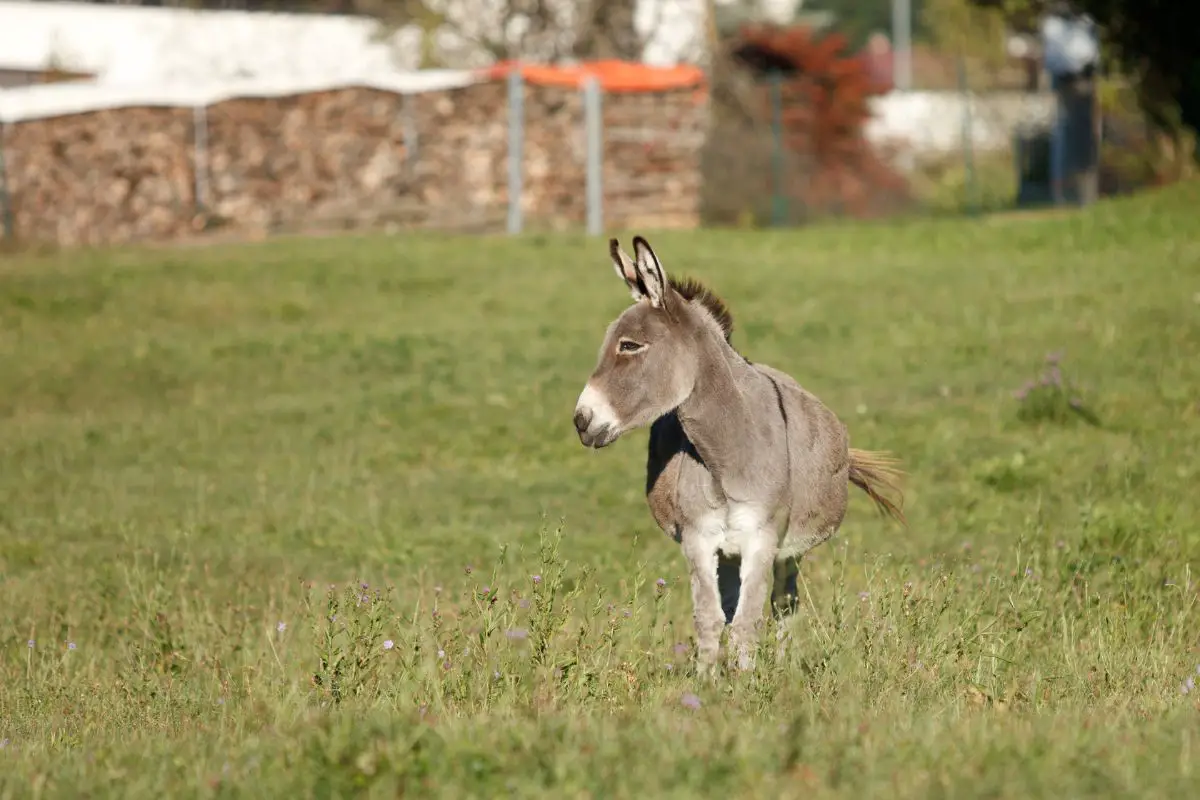
Like horses, donkeys are part of the Equus genus. These gray-colored mammals are smaller than horses but also popular domesticated mammals. Donkey species are found all over the globe and evidence shows them being used by the Egyptians thousands of years ago.
Domestic donkeys are smaller than wild donkeys and, weigh between 400-500 pounds, and are between 36-48 inches tall. These creatures are herbivores and like to eat grass, succulents, hay, and other plants. They can live to be between 27-40 years old.
Donkeys are smaller than domestic horses and are usually gray in color. The color of horses varies between species and is much faster than donkeys. Donkeys can only reach speeds of around 15 miles per hour, while horses can gallop up to 55 miles per hour or more.
4. Tapirs: Say What?
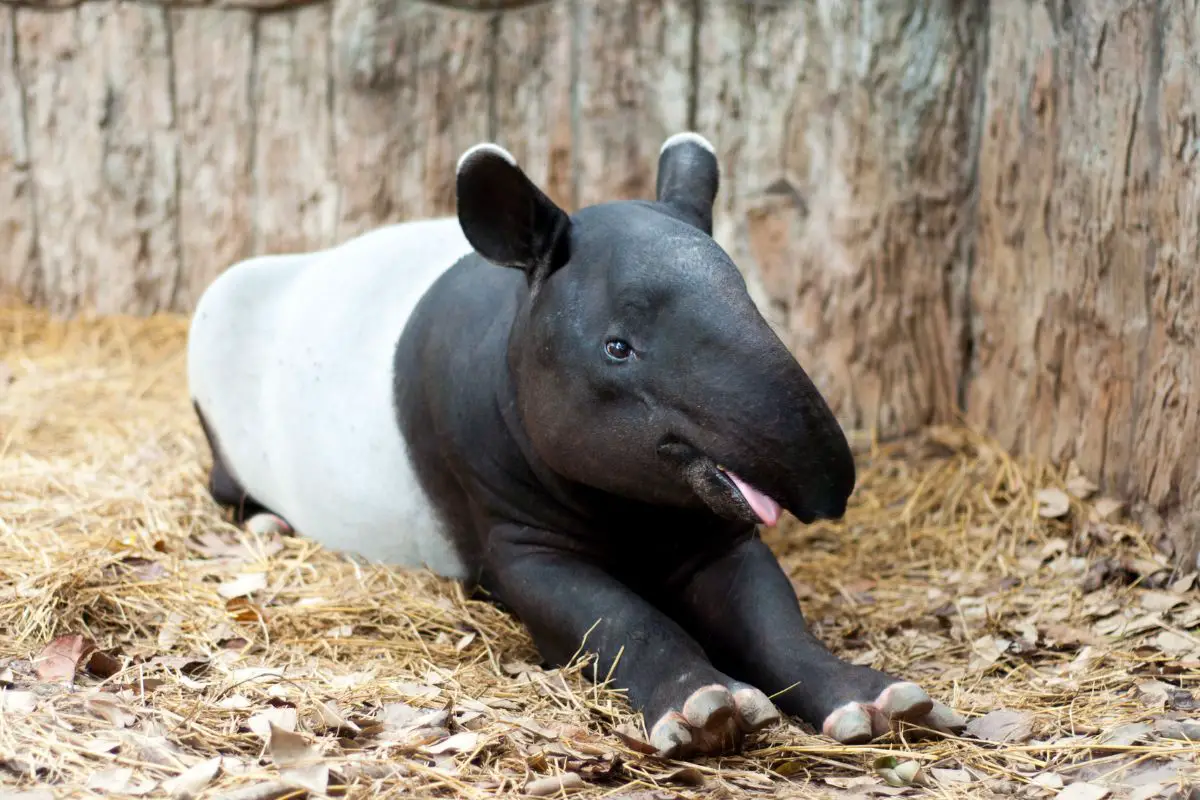
Tapirs look like pigs, but they’re more closely related to horses. These unusual animals have a long snout and, can be between 5.9-8.2 feet long, and weigh up to 550 pounds in adulthood. Most tapir species live in South America, including southern Mexico, Brazil, Venezuela, and Paraguay.
These hooved mammals are herbivores and like to eat leaves, grass, fruit, and berries. Their color varies from light gray to black and white. Tapirs live between 25 and 30 years old in the wild and in captivity.
You can probably guess that tapirs have never been domesticated. But their hoofs are what make them similar to horses. Tapirs and horses are classified as odd-toed ungulates, meaning they bear most of their weight on odd-numbered toes like three or five.
Both animals are also exclusively herbivores.
5. The White Rhino: Another Unusual Relative
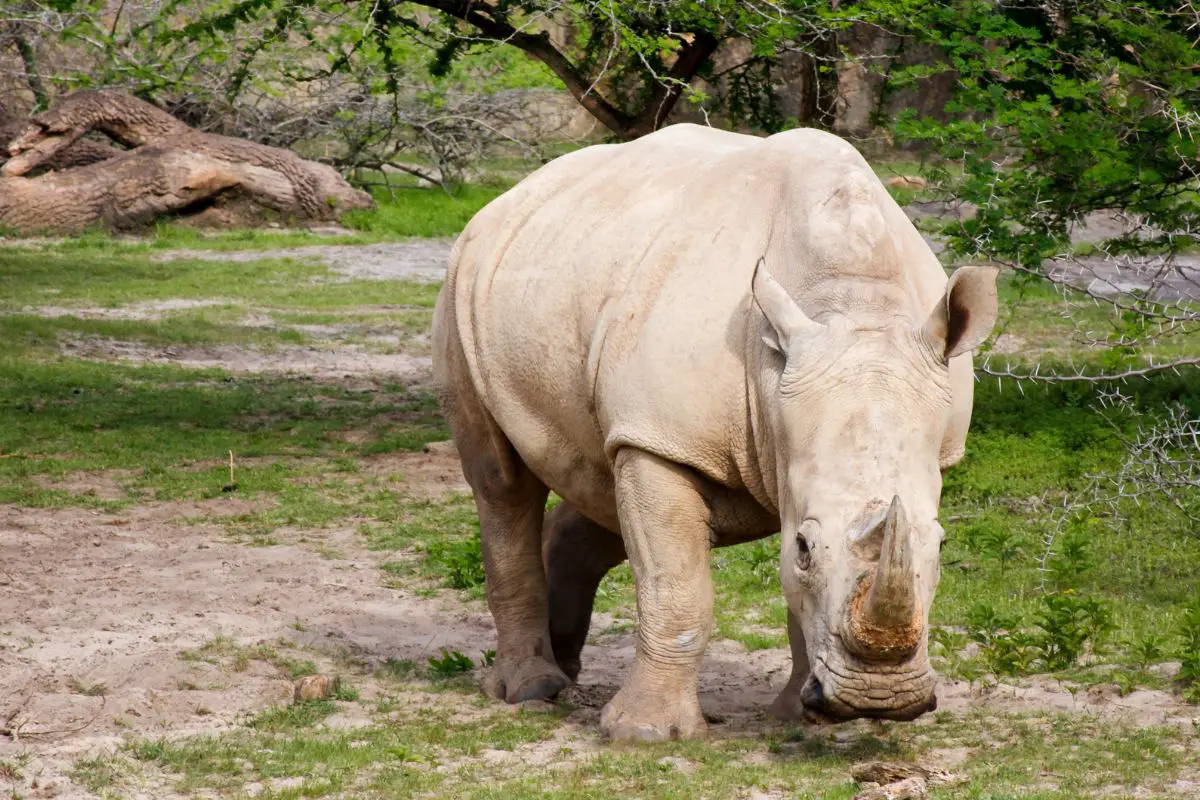
A rhinoceros is probably not on your list of similar animals when you look at a horse. But these large creatures are also odd-toed ungulates. The white rhino is from Africa and is the world’s second-largest land mammal.
They are massive, with males weighing up to 5,100 pounds and females weighing up to 3,700 pounds. They can be up to 6 feet tall at the shoulders. White rhinos are threatened due to hunters who cut off their horns to sell on the black market.
Otherwise, these mammals can live between 40-50 years old. White rhinos are grazing herbivores that live primarily on a diet of grasses. Most horses are domesticated by humans, while rhinos are only held in zoos and wildlife preserves in captivity.
They also have thick, gray-colored skin and a large horn growing from the center of their heads. Unless a horse is a unicorn, it doesn’t have any type of horn. The white rhinoceros also has short, stocky legs and a broad body, while horses are thinner and taller with slender legs.
6. Moose: A Majestic and Massive Creature
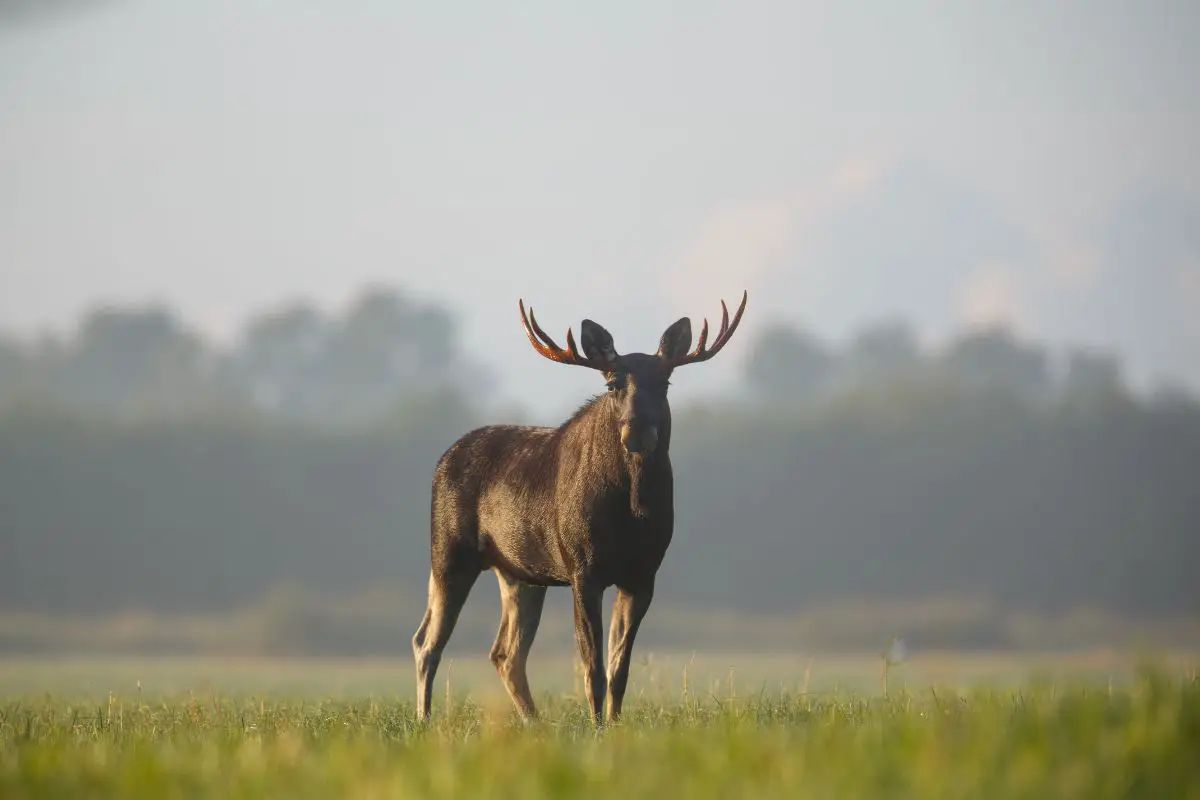
Nothing symbolizes Canada and Alaska quite like the incredible moose. This large, hooved mammal has wide, sprawling antlers and can weigh between 600-1,500 pounds and 4-7 feet tall. Moose can run up to 35 miles per hour and have never been domesticated.
These brown-colored animals live in North America’s northern regions and parts of Europe and Eurasia. They are herbivores and prefer to eat twigs, leaves, and berries. Moose are closely related to elk and deer and can live between 15 and 25 years in the wild.
Horses have solid hooves on each foot, and moose have two toes on each foot. The fur on a moose is double layered with a thick undercoat to keep them warm. Horses only have a single layer of hair that gets thicker in the winter.
They also don’t have antlers like moose, and they appear in numerous colors ranging from brown to gold, white, and cinnamon.
7. Elk: Make it a Deer, but Bigger
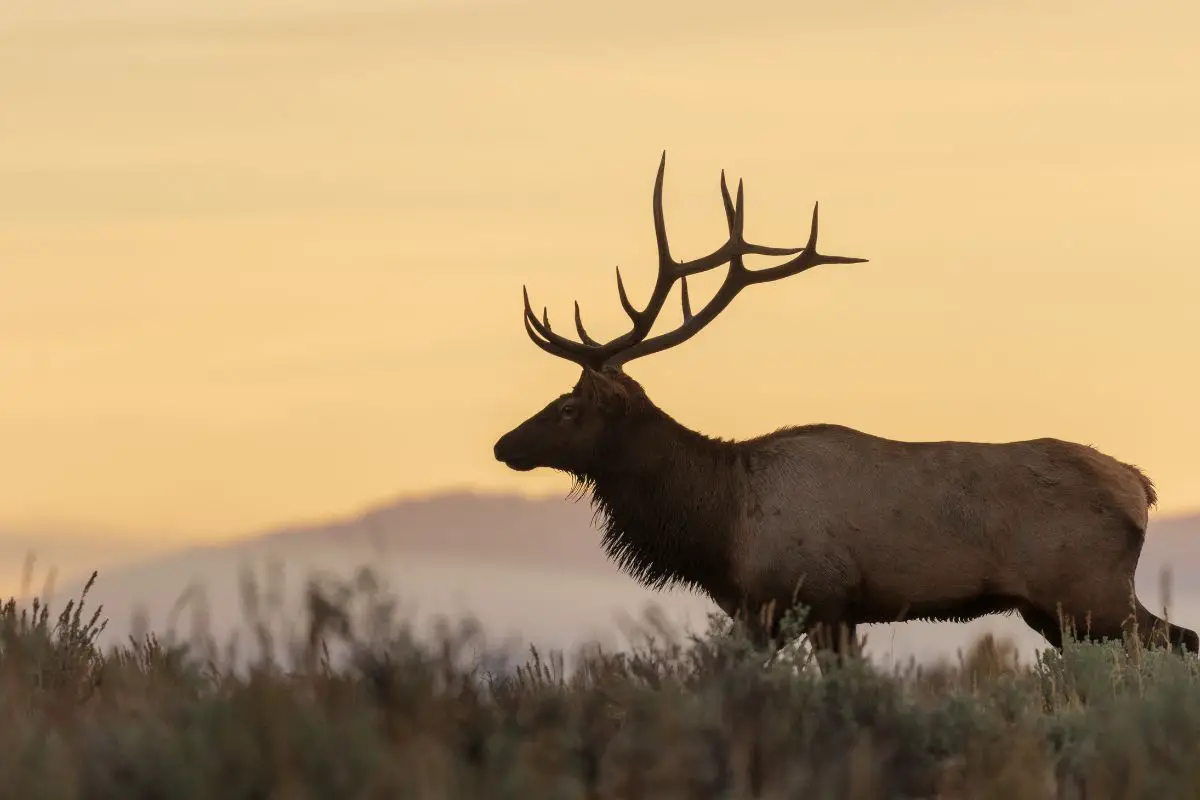
Elk are herbivores and the largest species within the deer family. These beautiful creatures are from North America and regions of Central Asia. They live between 10-13 years in the wild and can be over 2.5 meters long.
Male elks have large antlers, and both male and female elks are reddish-brown. Elks enjoy living in forests, mountains, and grassy fields. They mostly eat grasses year-round but will also dine on shrubs, twigs, and tree bark during the winter.
Female elk can reach 530 pounds, and males can weigh up to 730 pounds. Hunters look for elk to use as meat, while most people don’t hunt horses for food. Elk are also not domesticated animals, though they’re commonly seen roaming around the yards of people who live in their environment.
What might surprise you most is that elk eat meat, including eggs and some species of birds, although it’s extremely rare. Horses only eat plants, making them true herbivores. Camels: Let’s Celebrate Hump Day!
The iconic camel is known for the unusual humps located on its back. Most camels are found in the deserts of the Middle East and Africa. The dromedary camel can be up to 6.6 feet tall, just at the shoulder.
Male camels can weigh up to 1,300 pounds, and female adults can weigh up to 1,200 pounds. In the wild, camels can live to be around 40 years old. Camels are herbivores and enjoy eating grasses, oats, grains, and wheat but will also eat some types of cacti.
They use their humps to store water to prevent dehydration. Much like horses, camels are now domesticated animals in many regions worldwide. But camels are even-toed ungulates, while horses are odd-toed ungulates.
Horses don’t have humps, and they certainly don’t have necks as long as camels. They also require more assistance and water in a hot, dry climate like the desert.
8. Mules: A Unique Hybrid
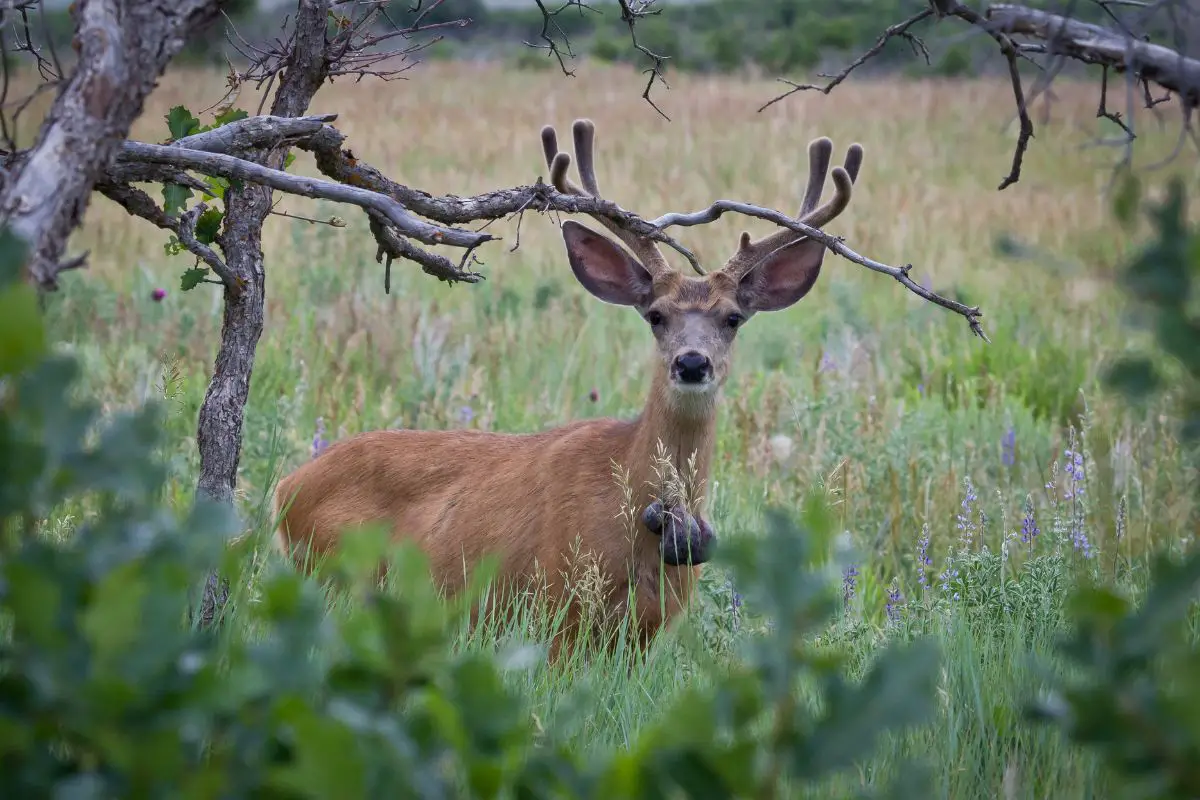
You might think that mules and donkeys are the same, but they’re a cross breed of female horses and male donkeys. These domesticated mammals are often found in countries like Mexico, China, Brazil, and Ethiopia. Mules generally eat hay and some types of grass.
They have a brown-colored coat and vary greatly in size, ranging from 600 to 1,500 pounds. Mules are generally between 55-77 inches tall. The average mule lifespan is 35-40 years, but some may live as old as 50 if they’re well taken care of.
Mules have short, thick heads and long ears, while horses have long, narrow muzzles and smaller, pointy ears. Horses have long manes, while mules’ manes are short and bristly. Both animals are domesticated, although they can be used for different purposes.
Mules tend to resemble a donkey much more closely than a horse in terms of looks.
9. Deer: Oh, Deer, What’s the Difference?
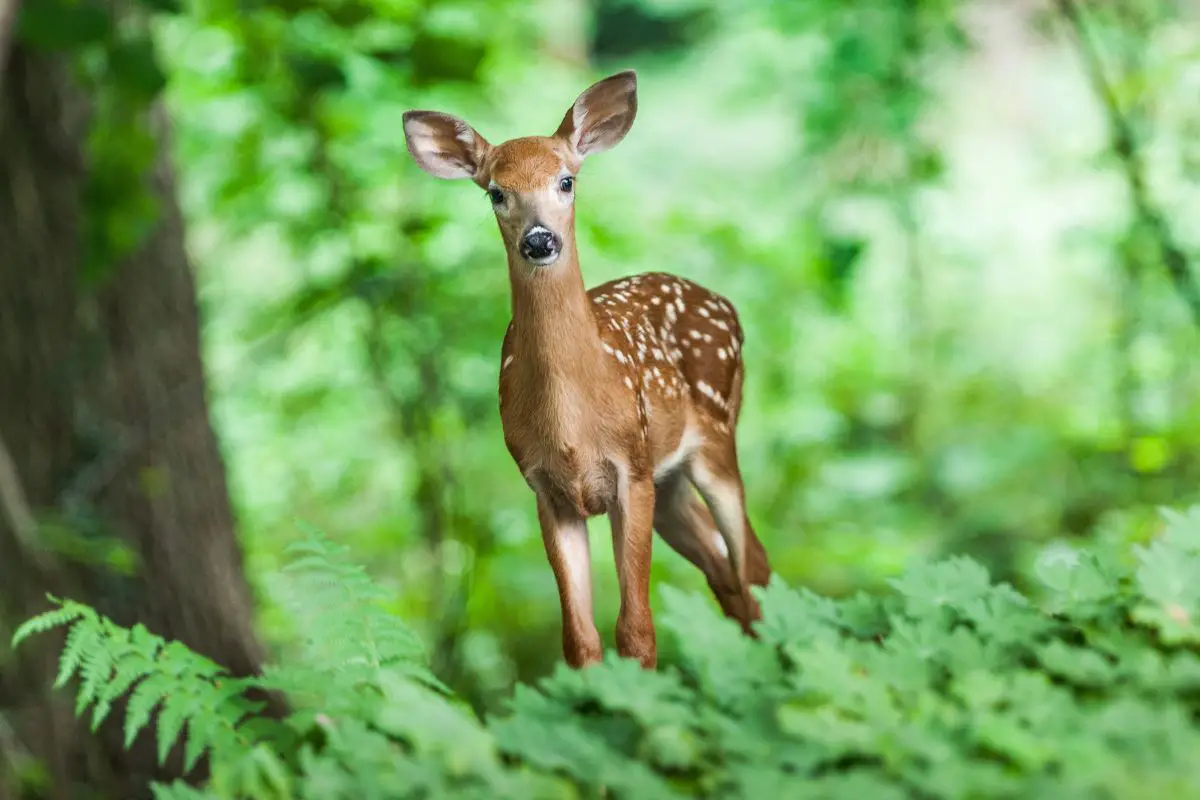
Deer are in the same family as elk and moose but much smaller. These graceful animals are found all over the globe, and there are many different species. An adult white-tail deer can weigh between 90-310 pounds, and the average height is three feet tall.
Their fur is light tan or reddish-brown, and they shed their winter coat in the spring. Deer are herbivores and eat grass, twigs, leaves, and branches. Depending on the environment, some deer also eat fruits and cacti.
Some deer can live to be 16 years old in the wild, but most only live to be a few years old. Deer are not typically domesticated, although reindeer may be domesticated in some regions. Horses are taller and much larger than deer and do not have antlers.
Deer don’t have a mane, while horses do. People usually hunt deer for food. Most deer are found throughout the United States and Europe.
10. Black Rhinos: What a Mystery
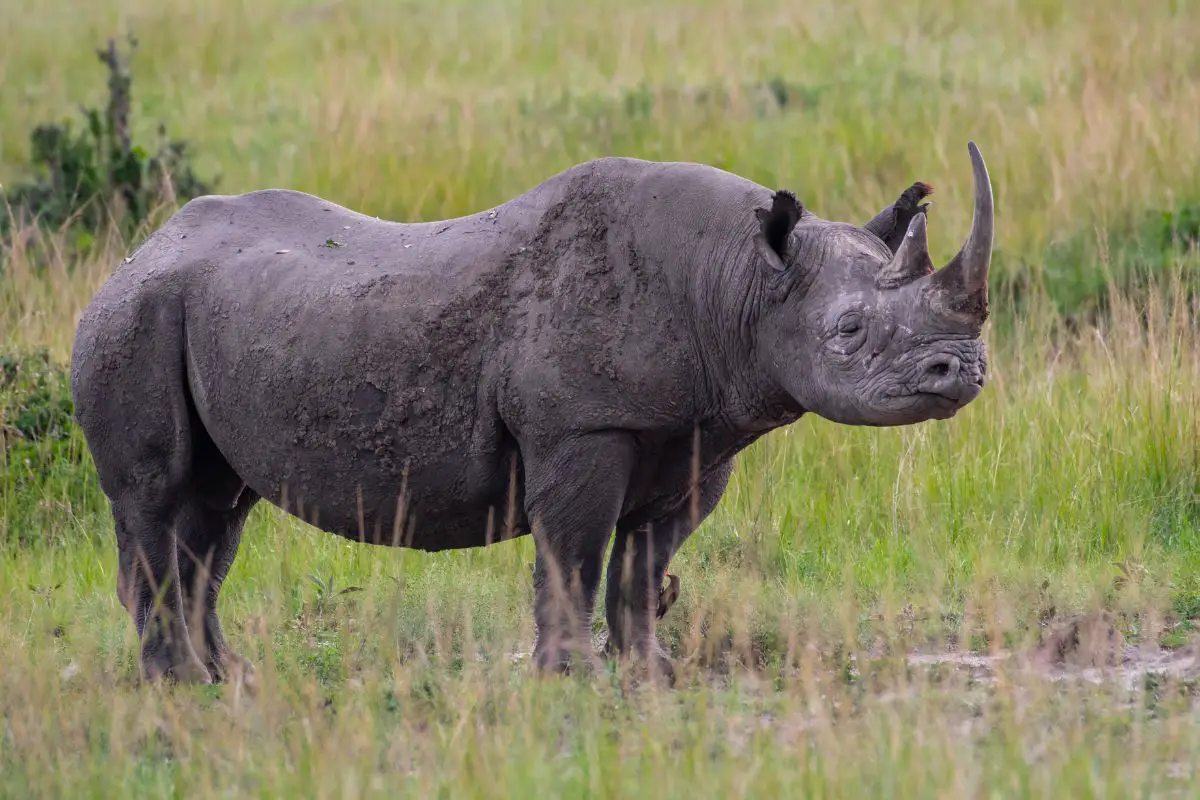
Black rhinos lived throughout Africa’s central, southern, and eastern regions and were once prevalent in the Sahara. These large, mysterious animals are browsers and prefer to eat a variety of twigs, branches, shrubs, and leaves rather than grasses. Black rhinos can be up to 12 feet long and can weigh between 1,800 to 3,000 pounds.
They live 35-50 years in the wild and are the third-largest rhino species. They tend to feed at night and prefer to roam at dusk and dawn. Yet again, these awesome animals are related to horses, although they differ in many ways.
Black rhinos are short and stout, while horses are tall and lean. Black rhinos have not been domesticated, while horses have. They also have thick skin and horns, while horses have a light fur coat and don’t have horns.
11. Goats: An Unlikely Horse Companion
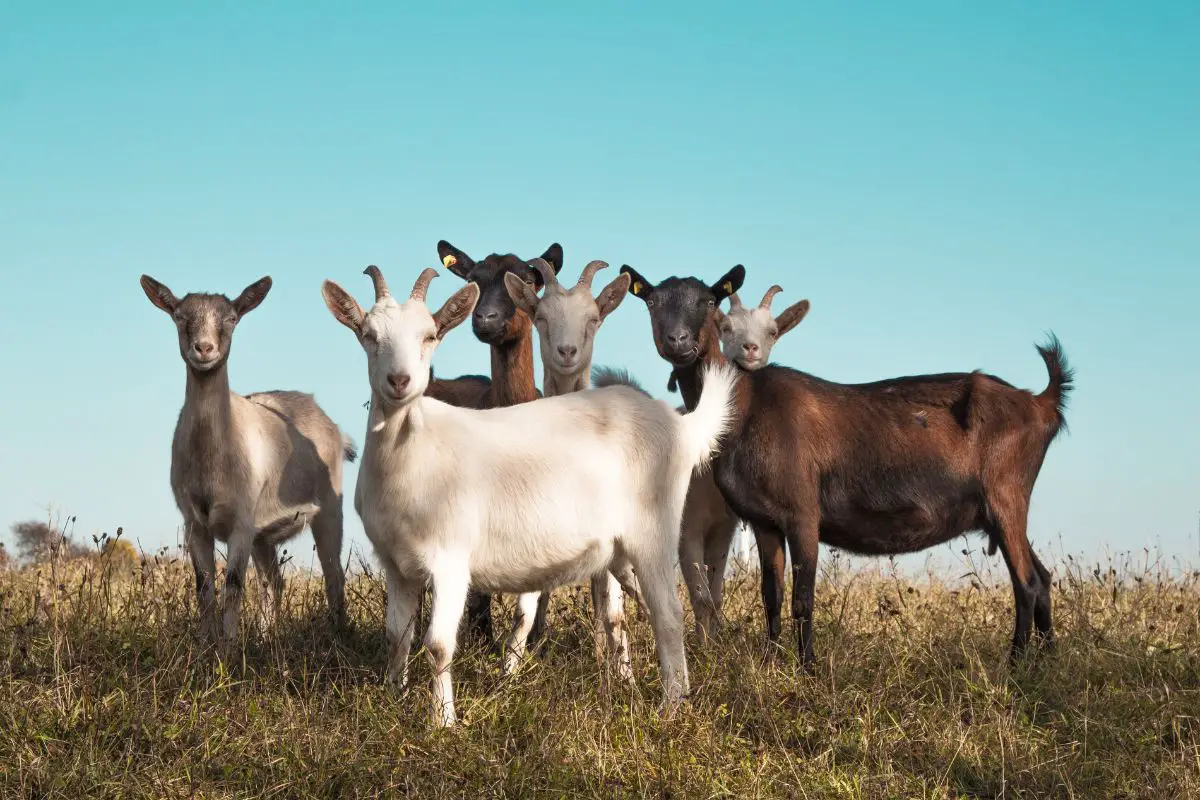
Domesticated goats are closely related to sheep and have hooves and horns. These popular animals are much smaller than a horse and typically weigh 45-60 pounds, although some breeds can weigh as much as 300 pounds. Goats are generally grazing herbivores that like to eat grass, weeds, and shrubs, but they’ve been known to eat almost anything, including tin cans!
A domestic goat typically lives 15-18 years. They’re found in many countries, including the United States, Bangladesh, Canada, Africa, and more. Goats are not from the same family as horses but tend to get along quite well.
Many people who own horses also get a few goats to act as companions. Horses have a mane and a long tail, while goats have short tails and horns instead of a mane. Goats also produce the milk used to make cheeses and drinks, while horses don’t produce milk for human consumption.
12. Bison: Another American Icon
![]()
While the horse symbolizes the west, there’s nothing quite as iconic as the American bison. This massive mammal has thick, brown fur and can weigh as much as 1,200 to 2,200 pounds. Bison are native to North America and were once in danger of extinction.
Today, they roam the plains in states like Kansas, Oklahoma, and Yosemite National Park and can be over 9 feet long and over 8 feet tall. American bison can live up to 20 years in the wild and enjoy grazing on various grasses. Horses can run quite fast, but American bison are also rather quick, clocking up to 35 miles per hour.
Some people raise bison to eat, but most animals are still considered wild. You cannot ride a bison like you can a horse. They also have much shorter legs and a wider, stouter body shape.
Both horses and bison are surprisingly strong swimmers.
13. Wild Horses: The Domestic Horse’s Closest Relative
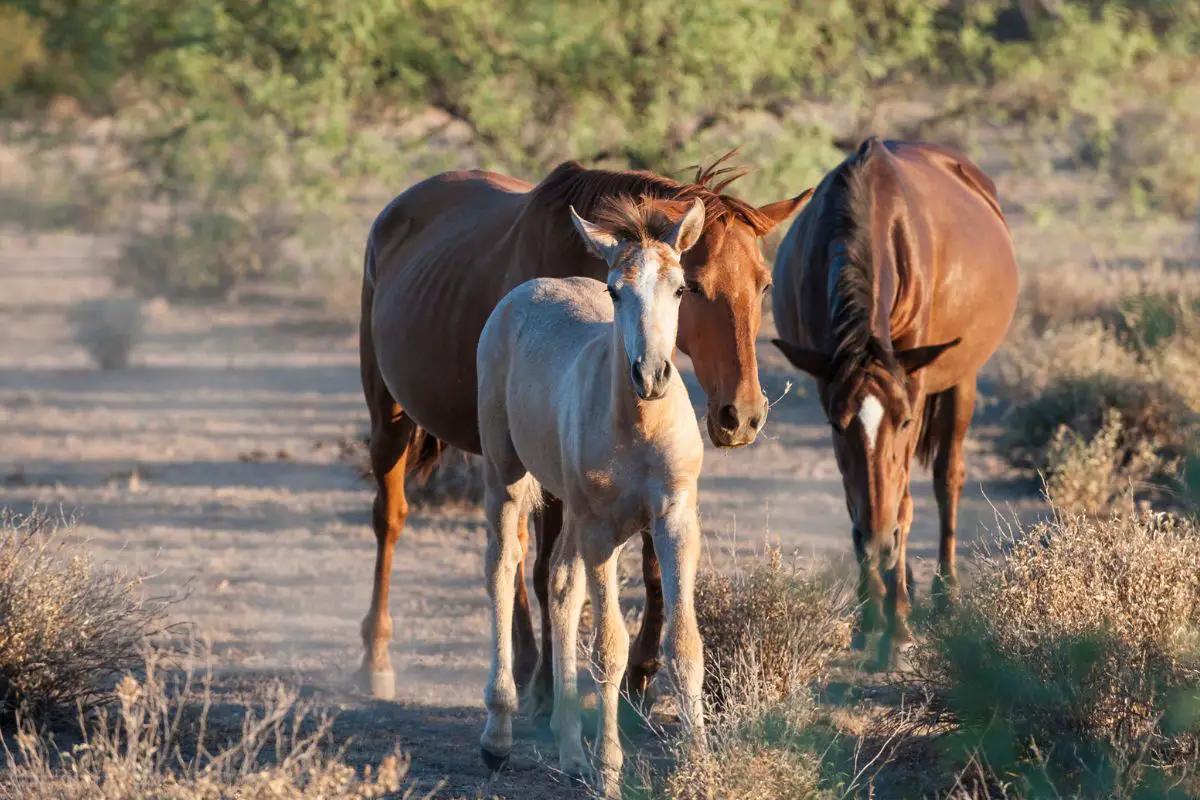
While most horses are domesticated, wild horses are still roaming the earth. These horses are larger than domesticated horses and are between 52-60 inches high, weighing between 700 and 1,000 pounds. They mostly live on public lands in the western part of the United States and have a diet consisting of plants like grasses and shrubs.
Domestic horses can live between 25-60 years old, yet the average lifespan of a wild horse is approximately 36 years. Wild horses’ manes stand upright, while domestic horses have long, flowing manes that sit to one side of the neck and head. Domestic horses also tend to have sleeker coats and longer necks.
Wild horses also typically have shorter legs. While some wild horses can be tamed, they will never adapt as well as their already domesticated relatives in terms of their behavior and how they interact with humans and other animals.
14. Okapi: A Blend of Horses and Zebras?
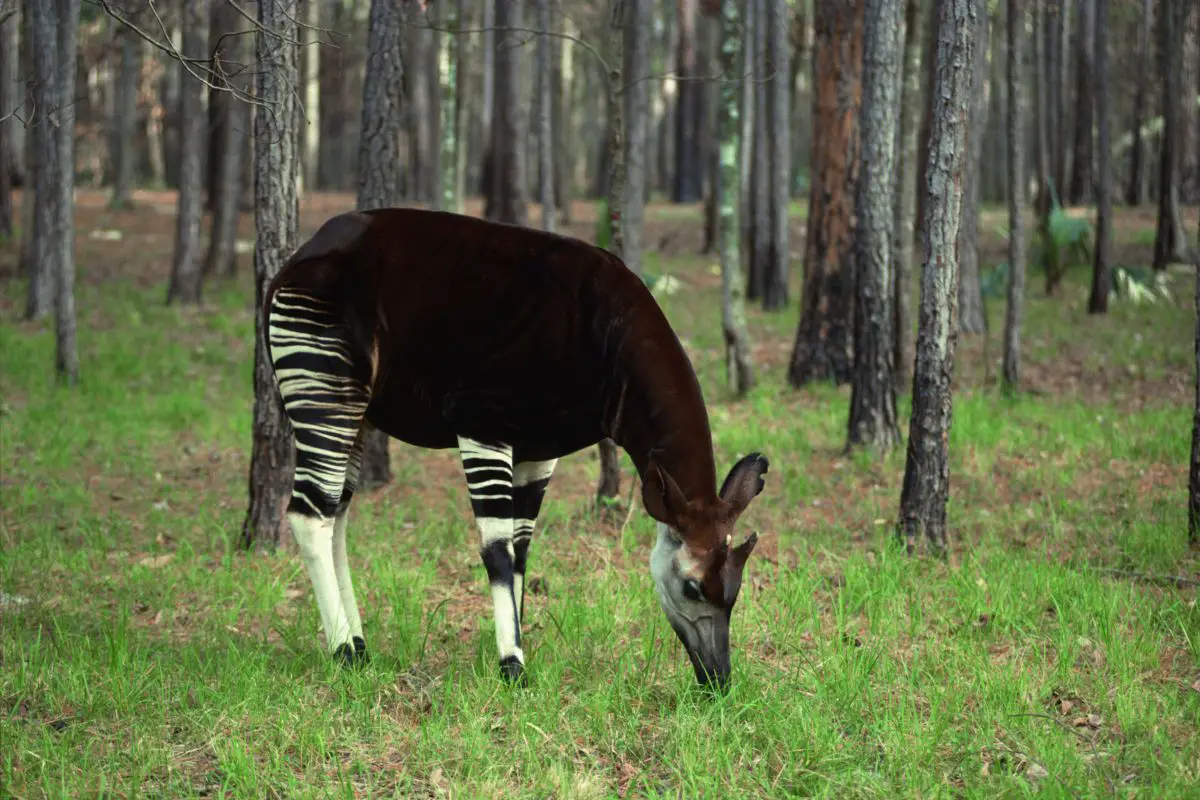
The okapi is a unique animal that resides in the Democratic Republic of the Congo in Africa and resembles a hybrid between a horse and a zebra. This fascinating animal may seem like a horse, but it’s related to the famous giraffe. It can be as tall as 5.6 feet high at the shoulder and weighs between 440-770 pounds.
The lifespan of an okapi is between 15-20 years in captivity, but its lifespan in the wild is still a mystery. They live near rivers and streams and feast on grass, buds, leaves, ferns, fungi, and some fruit. Okapi is hunted by some bushmen for meat and is prey for animals like leopards.
They’ve never been domesticated and have unique markings that have never been seen on a horse, such as their black and white stripes found at the back, blending into brown and then returning to their heads. This unique creature is a cousin to the giraffe, but its hooves and demeanor resemble horses. It’s also one of the few mammals that can lick its ears!
How do horses sleep?
Horses tend to sleep standing up, but they also like to lie down to get deeper sleep.
How well do horses see?
Horses have 360-degree vision because their eyes are on the sides of their heads. But horses have some blind spots in front of and below their noses, so they can’t see things directly in front of or below them. Horses use their lips and whiskers to smell and sense food to decide if it’s something they want to eat.
Are horses smart?
Horses are such popular domesticated animals because they can learn commands quickly. Horses can also communicate things to their owners and show them what they want, making them a highly intelligent (and friendly!) animal.



